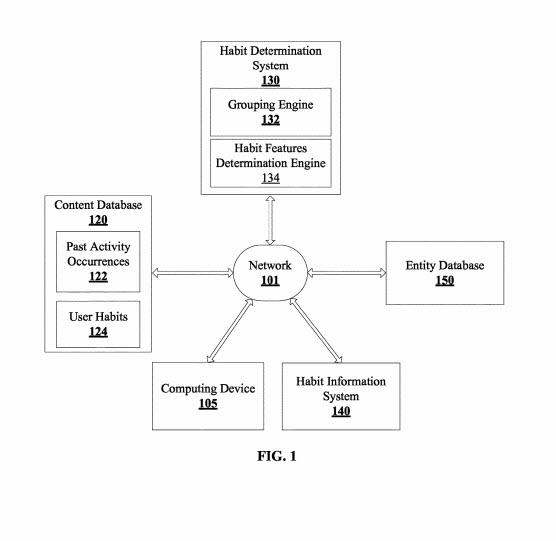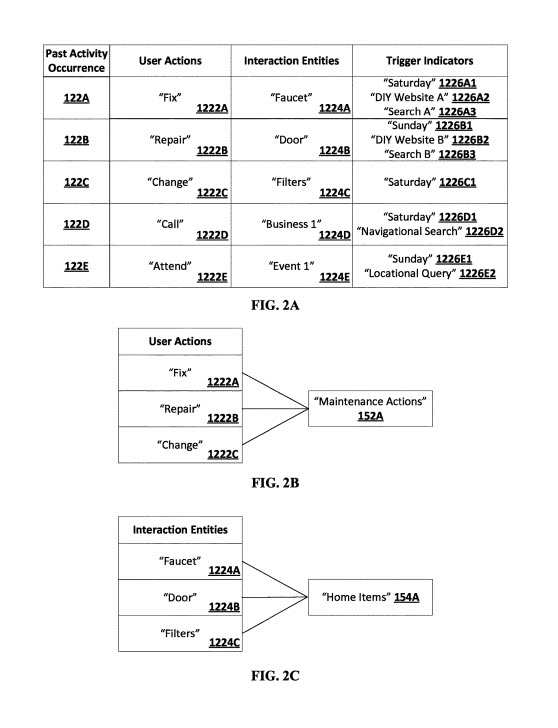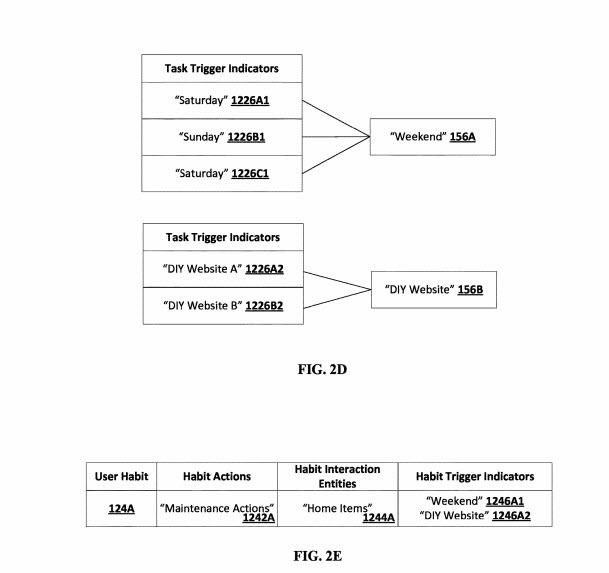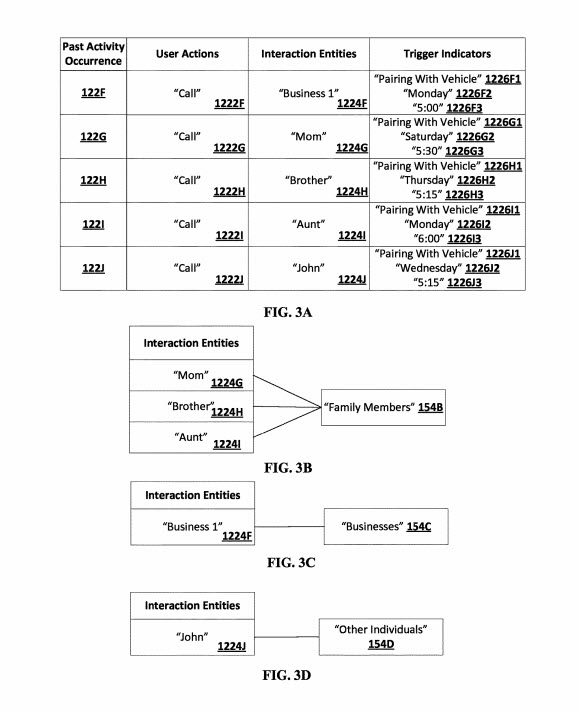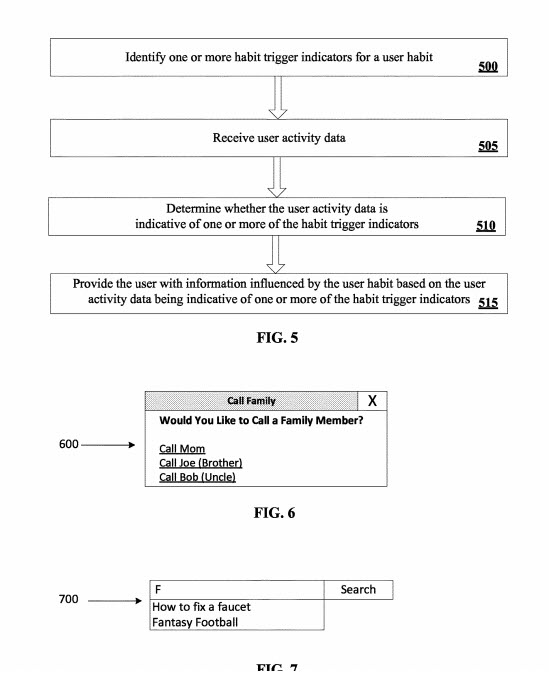Table of Contents
Just How Might Google incorporate User Habits Information into Search?
They have patented collecting information about user habits – what might they do with that information?
Might they promote query suggestions and boost search results in response to those user habits and the entities involved?
A Google patent that was granted at the end of August describes how Google may be working on learning about user habits of people who use Google Search and providing useful tools to them in response to what Google might learn about those habits.
Related Content:
This isn’t about Google attempting to predict a user’s needs in different contexts and providing results based on those. I have written about a patent from Google on Predicting a User’s Needs.
For example, one of the habits that the patent describes is that a user of the search engine might habitually call one or more of their family members on drives home from work.
Your opinion of whether this patent is invasive or helpful may vary based upon how comfortable you are with Google trying to track such information. The patent defines the process behind this patent as covering, “A user habit…based on the past user activity occurrences of the group.”
Google would track that activity defined as a habit and would try to identify a trigger indicator related to the occurrence of that action. Google would also attempt to understand the Interaction entities involved in a user action. The patent spells out examples of user habits, interaction entities, and trigger indicators like this:
For example, a habit action may be a collection of actions “contact” that encompasses user actions of “call” and “email” of past user activity occurrences of the group and additional user actions such as “text”. Also, for example, a habit interaction entity may be a collection of interaction entities “family members” that encompasses interaction entities of “mom”, “brother”, and “aunt” of past user activity occurrences of the group and additional interaction entities such as “sister”. Also, for example, a habit trigger indicator may be a collection of trigger indicators such as “Weekday” that encompasses trigger indicators of “Monday”, “Wednesday”, and “Thursday” of past user activity occurrences of the group and additional trigger indicators such as “Friday”.
The process behind this patent involves steps of:
- Identifying a number of past occurrences from a user
- Each of the past occurrences including an interaction indicator and one or more trigger indicators
Interaction indicators for past activities can include:
- One or more user actions
- One or more entities interacted with during the user actions
- Determining a group of the past activities of the user
- The group including multiple of the past activities, determined based on similarity between the interactions involved in the past activities of group members
- Determining one or more habit user actions based on the user actions of group members
- Determining one or more habit entities based on the interaction entities of the group
- Determining habit trigger indicators based on the trigger indicators of group members
- Associating a user habit with the user
- The user habit including the habit user actions
- The habit interaction entities
- the habit trigger indicators
Optionally, the following features about things like trigger indicators might be included:
- Trigger indicators for the past activities may include one or more temporal indicators associated with the past occurrences
- The step of determining the habit trigger indicators may include determining one or more habit temporal indicators based on the temporal indicators of group members
- The temporal indicators may include temporal indicators related to a time of day or a day of the week
The method may also include determining the similarity between interaction indicators of past occurrences based on the similarity between the user actions of the group and based on an interaction entity similarity between the interaction entities of the group. The step of determining the interaction entity similarity between the interaction entities of the group may be based on one or more relationships between the interaction entities (remember, an entity can be a business, such as a dry cleaner that someone drops clothes off at on the same day every week.) One or more relationships may include relationships with one or more entity collections.
To understand the user habits better, the patent may look at user activity data including:
-
- A location of a computing device of a user and user actions according to the computing device
- Determining whether the user activity data indicates one or more of the habit trigger indicators
- Providing information influenced by the user habit entry based on the user activity data being indicative of one or more of the habit trigger indicators
Confidence Meaures Regarding User Habits Information
A confidence measure for the user habit may be determined based on a count of the past activity occurrences in the group. That seems to make a lot of sense, that Google may want to make sure that what they are calling a habit, and finding ways to identify, and possibly assist with is a habit.
This is About All Entities Involved in Addition to Individual Users of the Search Engine
The patent talks a lot about collections of entities and how they are looking at a group of users and their activities, and not only whom the entity is who has a specific habit, but also the other entities involved, such as people receiving phone calls, or emails or text messages. Entities can be specific people, places, or things (such as businesses.)
Habits of other members of that entity collective may be tracked as well.
Where Does Search Come into this Patent?
In the summary of the patent is this section:
The determined one or more user habits represent new information that may be associated with a user. The determined one or more user habits may be used by one or more systems to, for example, influence (e.g., determine and/or rank) certain information related to the user habit. For example, the information may be influenced based on a determined or anticipated entry of the user into the user habit based on habit trigger indicators associated with the user habit.
This User Habits patent can be found at:
Determining a user habit
Inventors: Erwin Can Sar, Timothy Youngjin Sohn, Andrew Tomkins
Assignee: GOOGLE LLC
US Patent: 10,394,684
Granted: August 27, 2019
Filed: August 11, 2017
Abstract
Methods and apparatus related to determining one or more user habits for a user. A group of one or more past user activity occurrences of a user may be determined based on the similarity between the past user activity occurrences of the group. A user habit may be determined based on the past user activity occurrences of the group.
User Habit Takeaways
So, a User Habit can involve more than when you might call or email or text to specific people. As the patent tells us, a past activity that could be considered a habit might be a weekly visit to a grocery store. Given Google’s ability to track our Mobile Location History, that shouldn’t be surprising. Google may know that you like to shop for groceries after work every Monday evening on the way home from work.
The user action associated with that user habit may be to “buy” at a particular grocery store.
What might this mean to a person who uses Google? This is what we are told:
Also, for example, query suggestions and/or search results associated with the habit actions and/or habit interaction entities of the user habit may be promoted (e.g., have their ranking increased) for a potential display to the user via a computing device of the user based on satisfaction of the conditions of one or more of the habit trigger indicators.
Google could learn about User Habits of Users of Google from user activity data such as emails of the user or documents viewed by the user, or from what they might look at on the Web. This flowchart from the patent shows how they might learn about activities that we may engage in:
Google could take that user activity information and classify it into task triggers and regular habits, such as “home maintenance.”
Google may also track who the Entities that we interact with may be in some of our User Habits:
And Ultimately, We may see activity suggestions or autocomplete results related to our User Habits:
The patent mentions in a couple of places that this patent might be used in conjunction with a personal assistant program. Having a personal assistant who knows your user habits and what you like to do might be useful.
Search News Straight To Your Inbox
*Required
Join thousands of marketers to get the best search news in under 5 minutes. Get resources, tips and more with The Splash newsletter:
